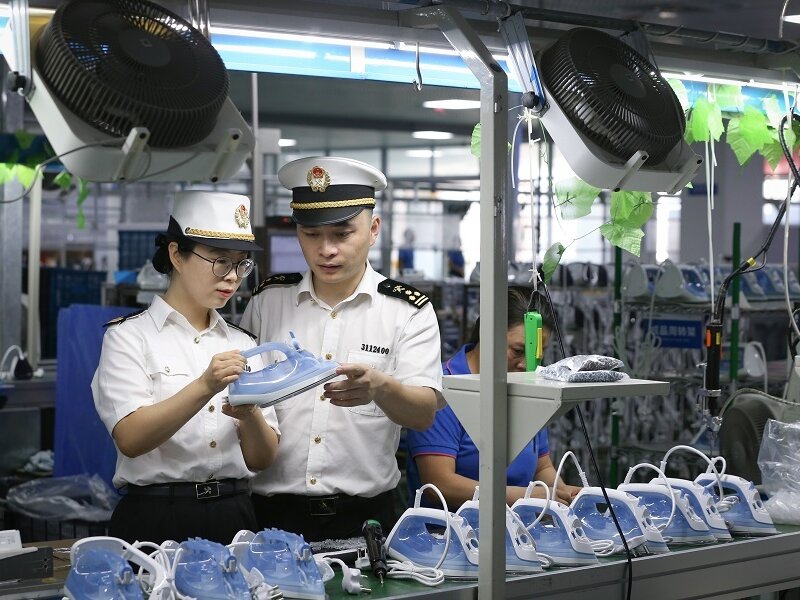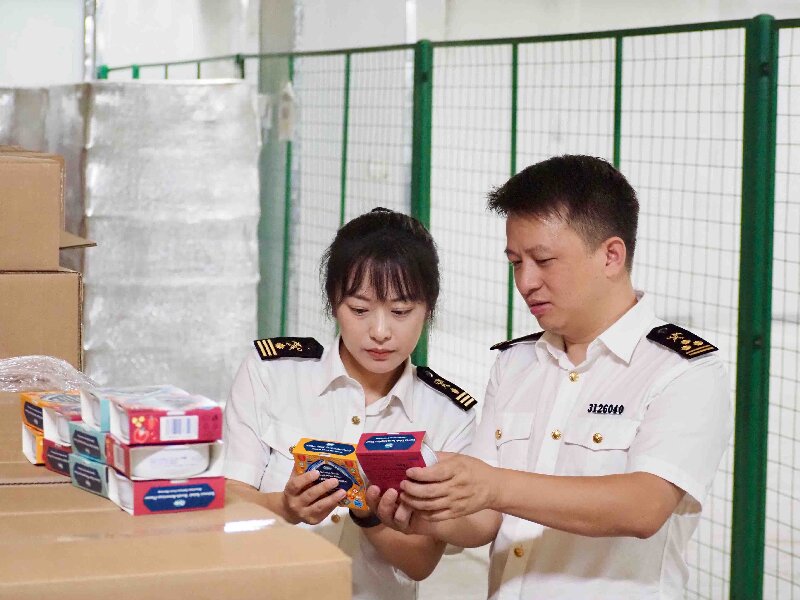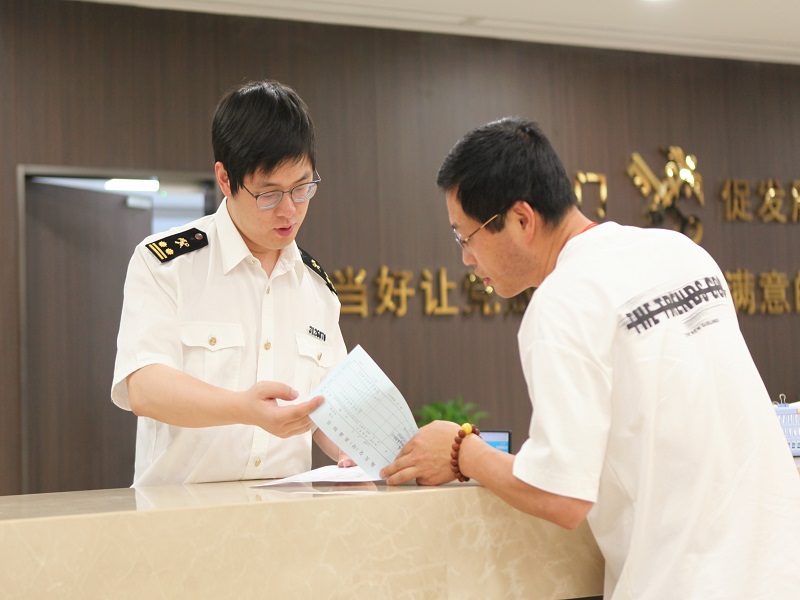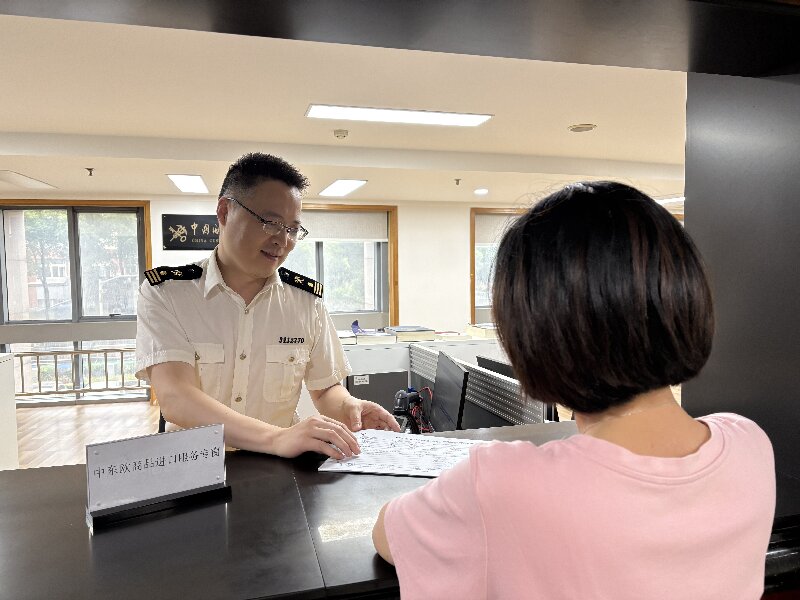iqilu Shandian News, July 18 During the first half of the year, Shandong's trade with other RCEP member countries reached RMB 634.09 billion, marking a year-on-year increase of 0.8% and contributing 36.7% of the province's imports and exports. Trade with Central and Eastern European countries (CEECs) amounted to RMB 30.67 billion, reflecting a year-on-year growth of 10.1% and constituting 1.8% of imports and exports. Collectively, these segments contributed 7% to Shandong's foreign trade growth. The following trends were observed:
Firstly, market expansion through collaborative frameworks has yielded commendable results. During the first half of the year, imports and exports between Shandong and ASEAN, ROK, and Japan demonstrated consistent growth. Notably, imports and exports with Brunei, Indonesia, and Cambodia showed significant increases of 42.6%, 52.5%, and 35.2%, respectively, among other RCEP member countries. Simultaneously, the potential for economic and trade cooperation with CEECs has gradually been realized. Among these, the trade volume with Poland, the largest trading market in CEE, reached RMB 12.23 billion, marking a significant 34.2% increase and comprising 39.9% of the region's imports and exports during the same timeframe. The trade volume with Greece, Romania, and the Czech Republic grew by 5%, 4.3%, and 1.9%, respectively.
Secondly, private enterprises contributed intensively, demonstrating notable import and export growth. Private enterprises contributed intensively to the RCEP framework and the China-CEE regional collaboration. During the first half of the year, the imports and exports with other RCEP member countries and CEECs were recorded at RMB 489.22 billion and RMB 23.72 billion, reflecting 1.3% and 12.5% increases, respectively, and constituting 77.2% and 77.3% of the imports and exports in these regions.
Thirdly, the synergetic effects of industrial collaboration continued to deepen. In the first half of the year, Shandong exported M&E products worth RMB 152.12 billion to other RCEP member countries, achieving a 12.9% growth and accounting for 41.1% of the exports to these countries. Exports of labor-intensive products and agricultural goods reached RMB 84.41 billion and RMB 39.8 billion respectively, accounting for 22.8% and 10.8% of the total. Imports of crude oil, M&E products, as well as agricultural products from other RCEP member countries reached RMB 92.75 billion, RMB 57.36 billion, and RMB 14.88 billion, respectively, showing increases of 2.3%, 10.4%, and 14.4%, respectively.
During the corresponding period, exports of M&E products, labor-intensive products, and agricultural products to CEECs totaled RMB 16.18 billion, RMB 3.97 billion, and RMB 1.03 billion, respectively, accounting for 60.6%, 14.9%, and 3.9% of the total. Imports of metal ores from CEECs amounted to RMB 1.76 billion, including RMB 910 million of copper ore (predominantly sourced from Serbia) and RMB 660 million of gold ore (predominantly sourced from Bulgaria). Additionally, M&E products imported totaled RMB 1.32 billion, reflecting a 10.2% growth.
Fourth, the progress made in trade facilitation has been further enhanced. In the first half of this year, authorities in Shandong Province issued 107,000 Certificates of Origin under RCEP agreements, enabling exports worth RMB 25.21 billion to benefit from preferential tariffs. This reflects increases of 5.8% and 12.4%, respectively, with enterprises benefiting from tariff reductions exceeding RMB 500 million by RCEP member countries. According to the information released at the Seventh China–CEEC Dialogue on Customs, Inspection and Quarantine Cooperation, 126 types of agricultural and food products from 14 CEECs have received approval for entry into China, with a cumulative registration of 3,430 overseas agricultural product enterprises. Furthermore, mechanisms for cross-border customs inspection, quarantine information sharing, and cooperation have been established. Currently, agricultural products from CEE, including Polish dairy products and Bulgarian sunflower oil, are smoothly entering the Shandong market, offering a wider range of options for downstream consumers.
Report by Yu Fan, Shandian News
Disclaimer:The above content is translated from Chinese version of Shandian News. The Shandian News version shall prevail.
Related News

Ningbo Small Appliances "Ride the Wave" in CEEC’s New Blue Ocean Market Exports Surge Over 33 percent in First Seven Months
2025-08-21
From January to July this year, Ningbo's appliance exports to CEECs reached 2.96 billion yuan, representing 33.5 percent year-on-year growth.

Canned Salmon Salad from Central and Eastern European Countries (CEECs) Makes Its Debut in Chinese Market via Ningbo
2025-08-19
Recently, a shipment of Polish canned salmon salad arrived at Meishan, a sub port of Ningbo, and, after completing customs declaration, on-site inspection, quarantine procedures, and online tax payment, was officially cleared for entry into the Chinese market.

Ningbo Achieves Double-Digit Growth in its Import and Export Volume with Central and Eastern European Countries (CEECs) During Jan-July Through Strategic Expansion of New Blue Ocean Market
2025-08-19
According to the latest official figures, Ningbo's import-export volume with CEECs reached 35.91 billion yuan from January to July this year, up 12.1% year-on-year. As both a pioneer and key gateway in China-CEEC cooperation, the city continues to strengthen its trade ties with the region.

Ningbo unveils 18-day China-Europe Express route to UK
2025-08-14
Ningbo-Zhoushan Port is set to launch its new China-Europe Express route on Sept 20, offering a record-breaking 18-day transit to Felixstowe, the United Kingdom's largest container port.

Heatwaves in Europe boost AC industry-Chinese manufacturers respond to rising demand for air conditioners on continent
2025-08-08
China's exports of air conditioners are seeing robust growth as unprecedented heatwaves sweep across Europe this summer, leading to surging demand for cooling appliances in the continent and prompting domestic household appliance manufacturers to make their products more intelligent and energy-efficient.

In the First Half of the Year, Ningbo's Import and Export with CEEC Experienced A 13.7% Year-on-year Increase
2025-07-25
According to Ningbo Customs statistics, in the first half of 2025, Ningbo's import and export volume with CEEC amounted to RMB 30.67 billion, marking a 13.7% year-on-year growth, significantly outpacing the overall foreign trade growth of the city.

Deputy Director of the General Administration of Customs Zhao Zenglian met with President of the Chamber of Commerce and Industry of Serbia Marco Czadež
2025-07-21
On the afternoon of July 18th, Zhao Zenglian, the deputy director of the General Administration of Customs, met with Marco Czadež, the president of the Serbian Chamber of Commerce and Industry and his delegation at the administration.

From a presence in five countries to 37 pavilions—a decade has woven the "Silk Road Tapestry" of Central and Eastern European products
2025-07-16
As a leading contributor to the import of Central and Eastern European products within both the city and the province, Beilun District recorded imports and exports of CNY7.87 billion with Central and Eastern European countries from January to May this year, reflecting a 4.4% year-on-year growth.
Hot News